在之前已经通过手写的方式实现了一个词法分析器,现在,我将利用之前手写的词法分析器,使用递归下降的方式,实现一个简单的语法分析器。
首先看看实验要求:
用递归下降法编写一个语法分析程序,使之与词法分析器结合,能够根据语言的上下文无关文法,识别输入的单词序列是否文法的句子。
为减轻实验编程负担,这里只要求实现部分产生式,文法的开始符号为 program 。
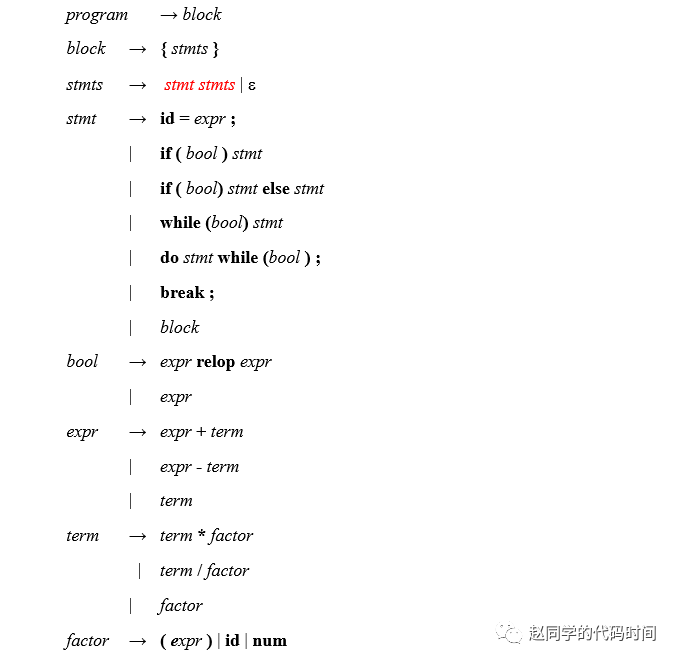
第一步,消除左递归。观察上面各个产生式,出现左递归的地方有expr和term。
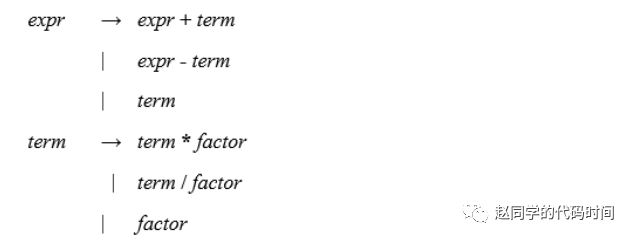
针对以上式子,首先提取左因子:
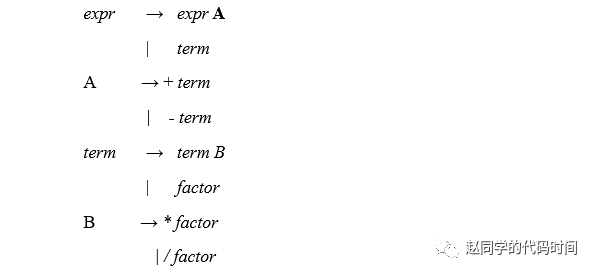
消除左递归:
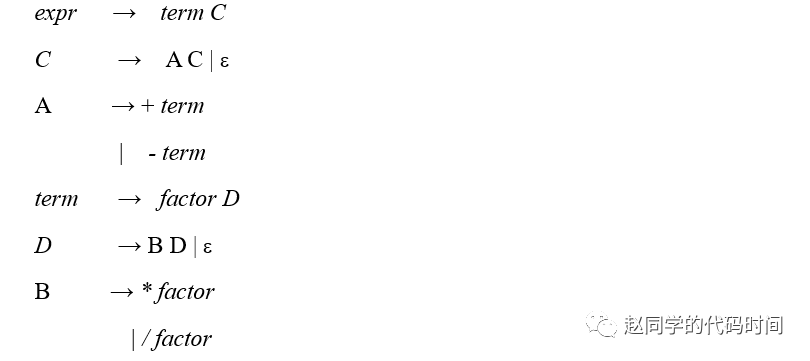
观察到 在if语句处也存在左公因子,一并提取,最终文法定义为:
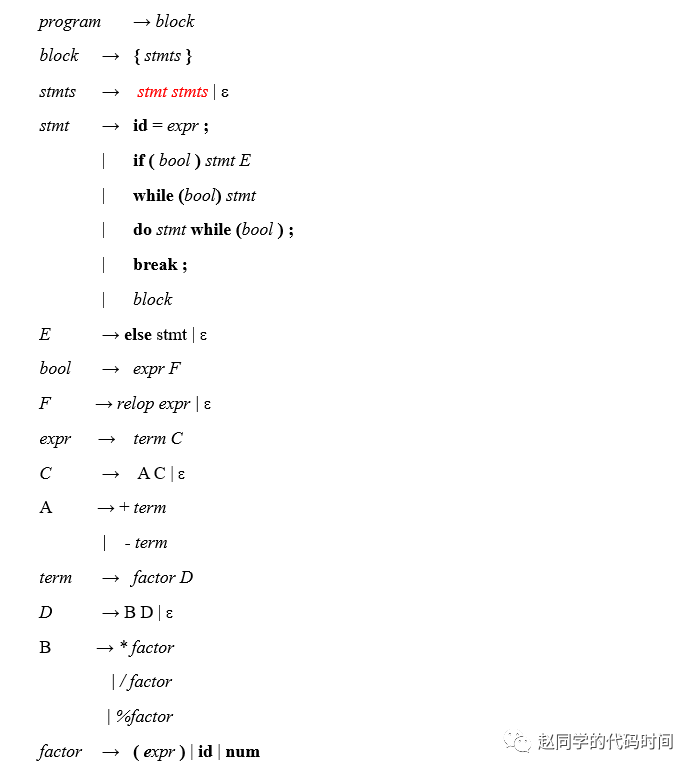
定义好文法后,考虑词法分析与语法分析的接口,由于采用递归下降的分析过程中,存在对token的回溯操作,因此,每次逐个获取词法单元并不容易实现,考虑将token对应的标志和内容使用pair的数组保存下来。
pair<int, string> tokens[10000];
int cursor_;
int tokens_size_;
并使用cursor_记录当前准备分析的位置,通过移动cursor_实现对token串的回溯过程。然后根据每一条语句,写出对应的梯度下降递归函数,就可以完成本实验,使用yylex自动生成的方法也类似,只需要维护tokens数组即可。
// 工具函数:获得一个向前看,但并不移动指针
pair<int, string> get_ahead(){
return tokens[cursor_];
}
// 工具函数:尝试匹配一个类型,匹配返回真
bool match(int type){
if(cursor_ >= tokens_size_) return false;
if(tokens[cursor_].first == type)
{
cursor_ ++;
return true;
}
return false;
}
// 工具函数:尝试匹配一个类型和字符串,都匹配返回真
bool match(int type, string target){
if(tokens[cursor_].first == type && tokens[cursor_].second == target)
{
cursor_ ++;
return true;
}
return false;
}
bool factor(){
cout << "Try to match factor" << endl;
if(match(IDENTITY)) return true;
if(match(DIGIT)) return true;
return match(SYMBOL, "(") && expr() && match(SYMBOL, ")");
}
bool B3(){
cout << "Try to match B3" << endl;
return match(SYMBOL, "%") && factor();
}
bool B2(){
cout << "Try to match B2" << endl;
return match(SYMBOL, "/") && factor();
}
bool B1(){
cout << "Try to match B1" << endl;
return match(SYMBOL, "*") && factor();
}
bool B(){
cout << "Try to match B" << endl;
int backup_cursor = cursor_;
if(B1()) return true;
cursor_ = backup_cursor;
if(B2()) return true;
cursor_ = backup_cursor;
if(B3()) return true;
cursor_ = backup_cursor;
return false;
}
bool D(){
cout << "Try to match D" << endl;
pair<int, string> ahead = get_ahead();
if(ahead.first == SYMBOL && (ahead.second == "*" || ahead.second == "/" || ahead.second == "%")) return B() && D();
return true;
}
bool term(){
cout << "Try to match term" << endl;
return factor() && D();
}
bool A2(){
cout << "Try to match A2" << endl;
return match(SYMBOL, "-") && term();
}
bool A1(){
cout << "Try to match A1" << endl;
return match(SYMBOL, "+") && term();
}
bool A(){
cout << "Try to match A" << endl;
int backup_cursor = cursor_;
if(A1()) return true;
cursor_ = backup_cursor;
if(A2()) return true;
cursor_ = backup_cursor;
return false;
}
bool C(){
cout << "Try to match C" << endl;
pair<int, string> ahead = get_ahead();
if(ahead.first == SYMBOL && (ahead.second == "+" || ahead.second == "-")) return A() && C();
return true;
}
bool expr(){
cout << "Try to match expr" << endl;
return term() && C();
}
bool F(){
cout << "Try to match F" << endl;
pair<int, string> ahead = get_ahead();
if(ahead.first == RELOP) return match(RELOP) && expr();
return true;
}
bool bool_(){
cout << "Try to match bool" << endl;
return expr() && F();
}
bool E(){
cout << "Try to match E" << endl;
pair<int, string> ahead = get_ahead();
if(ahead.first == KEYWORD && ahead.second == "else") return match(KEYWORD, "else") && stmt();
return true;
}
bool stmt6(){
cout << "Try to match stmt choice 6" << endl;
return block();
}
bool stmt5(){
cout << "Try to match stmt choice 5" << endl;
return match(KEYWORD, "break") && match(SYMBOL, ";");
}
bool stmt4(){
cout << "Try to match stmt choice 4" << endl;
return match(KEYWORD, "do") && stmt() && match(KEYWORD, "while") && match(SYMBOL, "(") && bool_() && match(SYMBOL, ")") && match(SYMBOL, ";");
}
bool stmt3(){
cout << "Try to match stmt choice 3" << endl;
return match(KEYWORD, "while") && match(SYMBOL, "(") && bool_() && match(SYMBOL, ")") && stmt();
}
bool stmt2(){
cout << "Try to match stmt choice 2" << endl;
return match(KEYWORD, "if") && match(SYMBOL, "(") && bool_() && match(SYMBOL, ")") && stmt() && E();
}
bool stmt1(){
cout << "Try to match stmt choice 1" << endl;
return match(IDENTITY) && match(SYMBOL, "=") && expr() && match(SYMBOL, ";");
}
bool stmt(){
cout << "Try to match stmt" << endl;
int backup_cursor = cursor_; // 指针的回溯
if(stmt1()) return true;
cursor_ = backup_cursor;
if(stmt2()) return true;
cursor_ = backup_cursor;
if(stmt3()) return true;
cursor_ = backup_cursor;
if(stmt4()) return true;
cursor_ = backup_cursor;
if(stmt5()) return true;
cursor_ = backup_cursor;
if(stmt6()) return true;
cursor_ = backup_cursor;
return false;
}
bool stmts(){
cout << "Try to match stmts" << endl;
pair<int, string> ahead = get_ahead();
if(ahead.first == SYMBOL && ahead.second == "}") return true;
else return stmt() && stmts();
}
bool block(){
cout << "Try to match block" << endl;
return match(SYMBOL, "{") && stmts() && match(SYMBOL, "}");
}
bool program(){
cout << "Try to match program" << endl;
return block();
}
由于已经高度模块化,main函数很简单:
int main()
{
if(!DFA()) return 0; // 词法分析
tokens_size_ = cursor_;
cursor_ = 0; // 初始化指针
if(program()) cout << "ACCEPT !" << endl;
else cout << "ERROR !" << endl;
}
测试:
使用实验指导代码测试:
input:
{
i = 2;
sum = 0;
while (i <=100) {
sum = sum + i;
i = i + 2;
if(i%5==0) break;
}
}
output:
SYMBOL : {
i = 2;
IDENTITY : i
SYMBOL : =
DIGIT : 2
SYMBOL : ;
sum = 0;
IDENTITY : sum
SYMBOL : =
DIGIT : 0
SYMBOL : ;
KEYWORD : while
SYMBOL : (
IDENTITY : i
RELOP : <=
DIGIT : 100
SYMBOL : )
SYMBOL : {
IDENTITY : sum
SYMBOL : =
IDENTITY : sum
SYMBOL : +
IDENTITY : i
SYMBOL : ;
IDENTITY : i
SYMBOL : =
IDENTITY : i
SYMBOL : +
DIGIT : 2
SYMBOL : ;
KEYWORD : if
SYMBOL : (
IDENTITY : i
SYMBOL : %
DIGIT : 5
RELOP : ==
DIGIT : 0
SYMBOL : )
KEYWORD : break
SYMBOL : ;
SYMBOL : }
SYMBOL : }
Try to match program
Try to match block
Try to match stmts
Try to match stmt
Try to match stmt choice 1
Try to match expr
Try to match term
Try to match factor
Try to match D
Try to match C
Try to match stmts
Try to match stmt
Try to match stmt choice 1
Try to match expr
Try to match term
Try to match factor
Try to match D
Try to match C
Try to match stmts
Try to match stmt
Try to match stmt choice 1
Try to match stmt choice 2
Try to match stmt choice 3
Try to match bool
Try to match expr
Try to match term
Try to match factor
Try to match D
Try to match C
Try to match F
Try to match expr
Try to match term
Try to match factor
Try to match D
Try to match C
Try to match stmt
Try to match stmt choice 1
Try to match stmt choice 2
Try to match stmt choice 3
Try to match stmt choice 4
Try to match stmt choice 5
Try to match stmt choice 6
Try to match block
Try to match stmts
Try to match stmt
Try to match stmt choice 1
Try to match expr
Try to match term
Try to match factor
Try to match D
Try to match C
Try to match A
Try to match A1
Try to match term
Try to match factor
Try to match D
Try to match C
Try to match stmts
Try to match stmt
Try to match stmt choice 1
Try to match expr
Try to match term
Try to match factor
Try to match D
Try to match C
Try to match A
Try to match A1
Try to match term
Try to match factor
Try to match D
Try to match E
Try to match stmts
Try to match stmts
ACCEPT !
最后发现梯度递归函数已经成功地接受了我们的输入。
-
分析器
+关注
关注
0文章
93浏览量
12597
发布评论请先 登录
相关推荐

基于自顶向下技术的工程机械Digital Prototyping设计方法及应用
一个高效的语法分析器生成工具
YACC在ATLAS语言语法分析中的冲突消解研究
编译原理实践环节模拟试题
借助Lex和Yacc进行词法语法分析
EDA设计一般采用自顶向下的模块化设计方法





 自顶向下的语法分析器—采用递归下降方法
自顶向下的语法分析器—采用递归下降方法
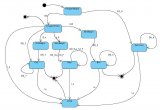










评论